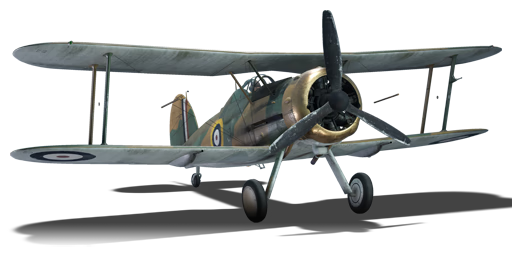

The Gladiator Mk IIF is a gift British fighter. It has been in the game since the start of the Open Beta Test prior to Update 1.27. This fighter aircraft used to be a part of Britain's reserve aircraft before it and the Gladiator Mk IIS were removed and replaced by the Fury and Nimrod aircraft.
At Rank I and a battle rating of, this plane would typically have been one of the first fighters a new player will research. However, the Gladiator, like its sea-based cousin, may be difficult to seek success in, especially in Realistic Battles mode. Within RB, when up-tiering comes into play, it will have to deal with not only biplane adversaries such as the CR.42, F3F-2 and the very manoeuvrable Ki-10, but also more advanced fighters such as the P-40E, Bf 109s, I-16s, and Ki-43s. All these plane types have several varying advantages against the Gladiator, which can make early grinding a bit unbearable for some players.
flaps
flaps
flaps
brake
control
| Belt | Belt filling | Armor penetration (mm) at a distance: | |||||
|---|---|---|---|---|---|---|---|
| 10 m | 100 m | 500 m | 1000 m | 1500 m | 2000 m | ||
| T/AP/AP-I/Ball/Ball/I | 13 | 12 | 7 | 3 | 2 | 0 | |
| T/AP/AP-I/AP-I/I | 13 | 12 | 7 | 3 | 2 | 0 | |
| IT/AP-I | 13 | 12 | 7 | 3 | 2 | 0 | |
| AP-I/AP-I/I | 13 | 12 | 7 | 3 | 2 | 0 | |












Flight performance | |
|---|---|
Survivability |
|---|
Weaponry |
|---|